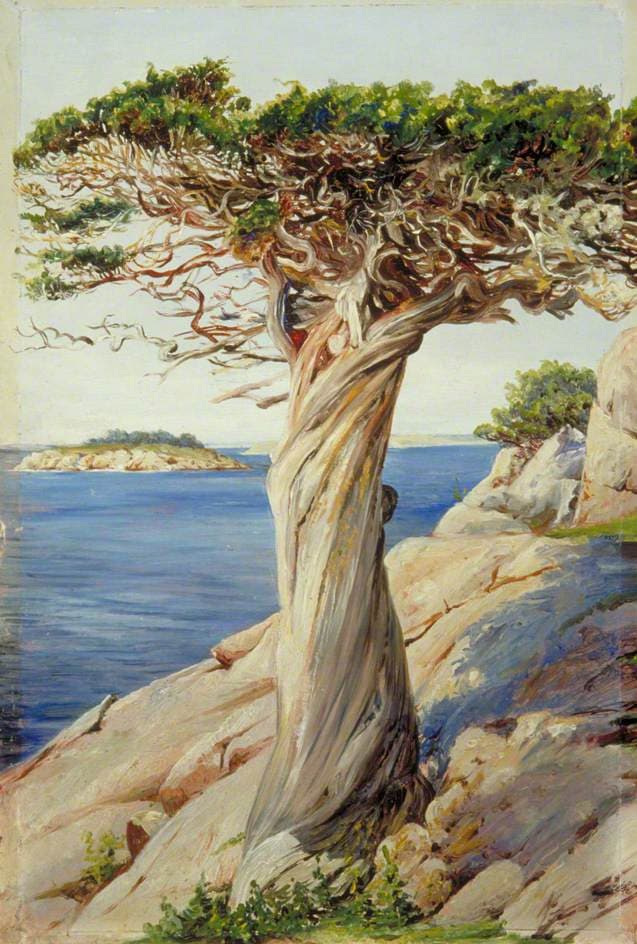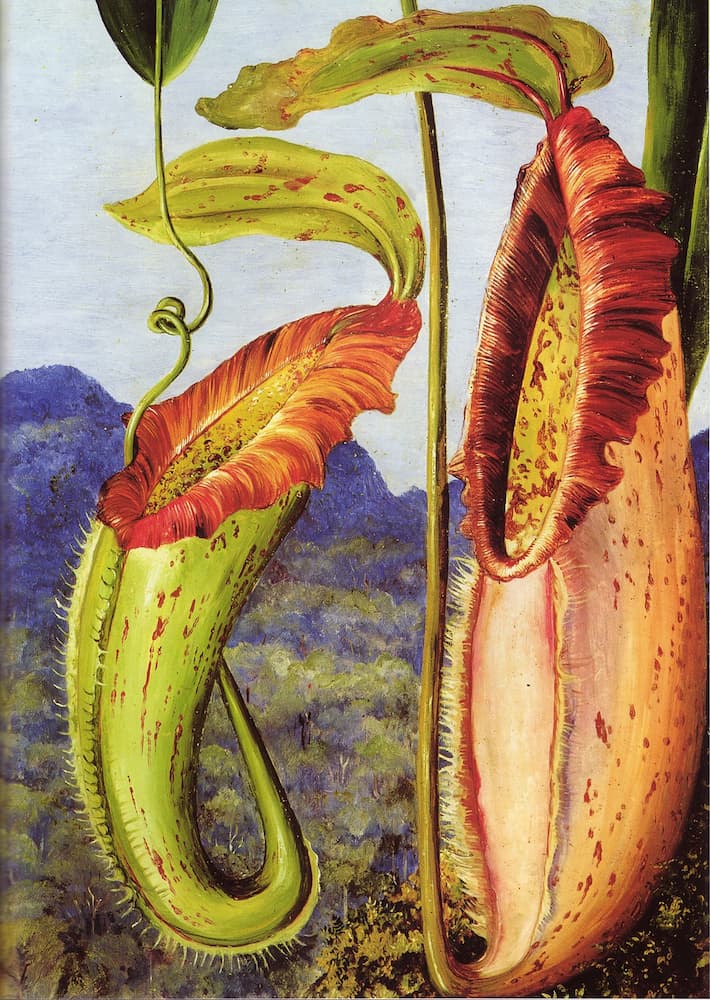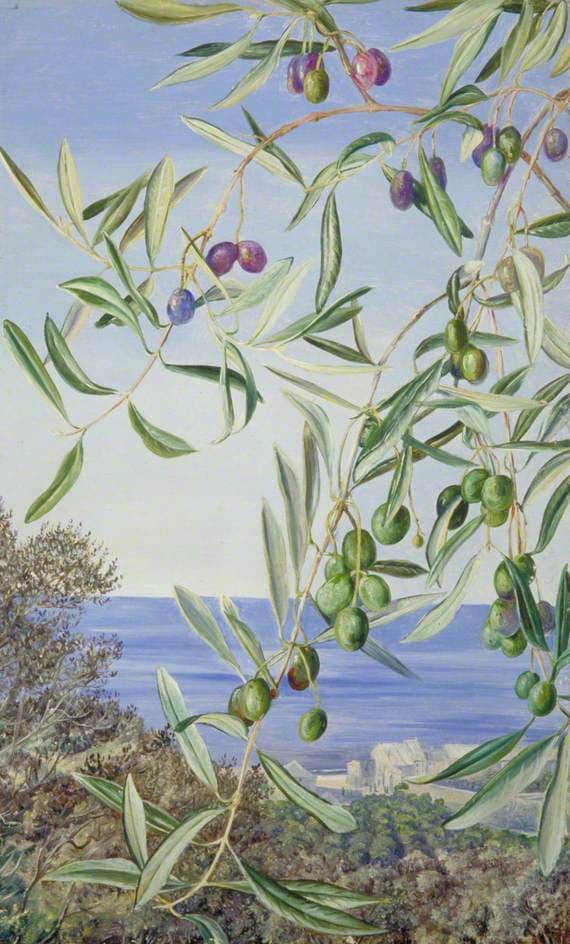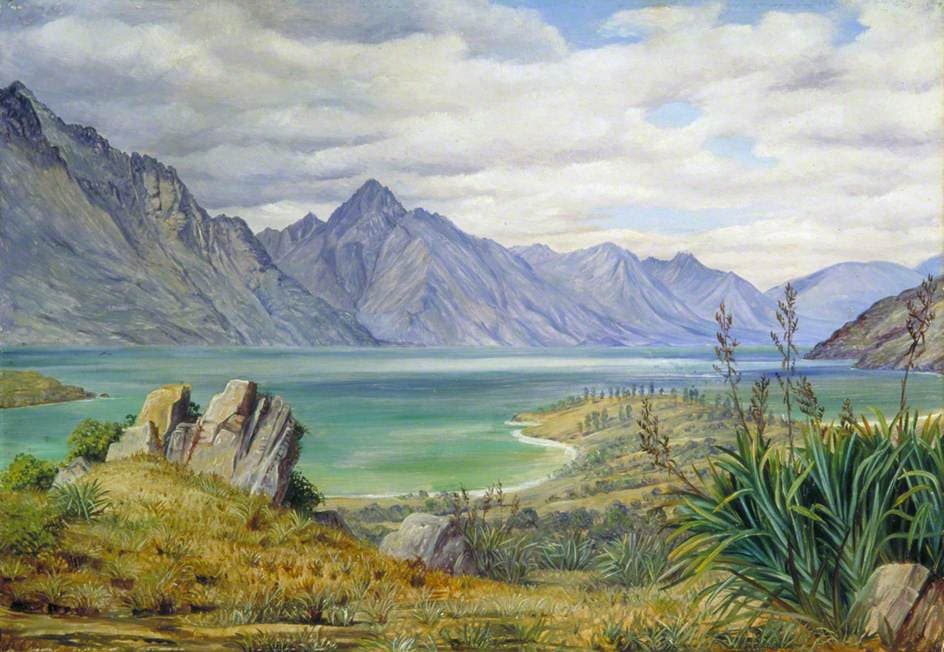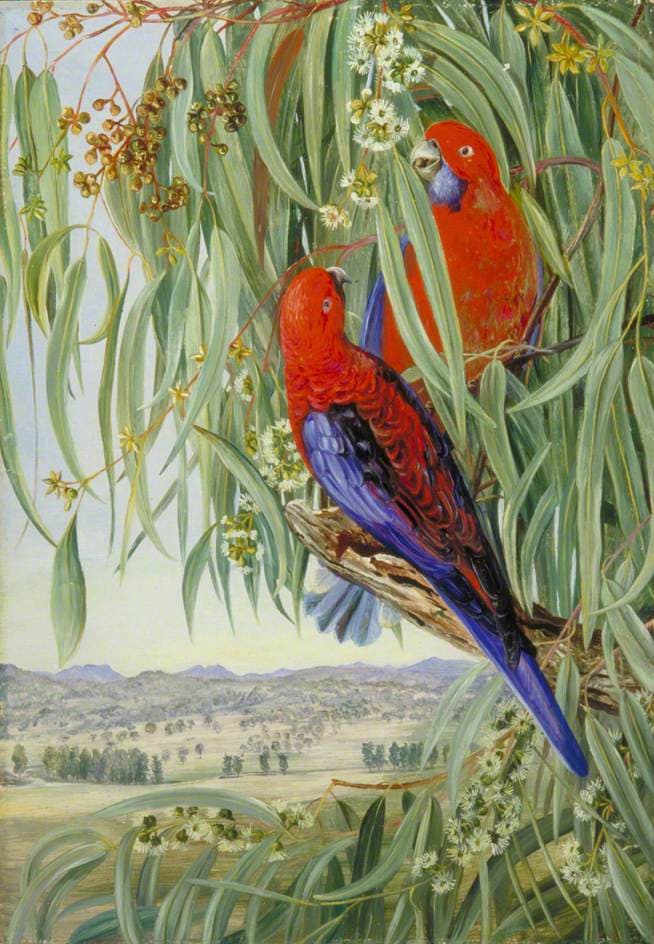Artist Introductions
Marianne North
The Landscape of Botany
For the final instalment of landscape Artist Introductions, I was looking for something different: together, we have covered Welsh modernism, British travel painting, 1930s expressionism, Scandinavian symbolism, and American romanticism. After scrolling through thousands of paintings on Art UK, I came across Marianne North (I was keen to write about John Northcote Nash, but having already covered two white British men, I thought I’d keep looking). She is a bit of a diversion from traditional landscape, as she is most well-known as a botanist and botanical artist, but her work is unusual, tropical, and vivacious.
Born in 1830, she began painting flowers after the death of her mother in 1855. She travelled in Europe with her father, and after his death in 1869, she made it her mission to record the flora and fauna of distant lands. It is said that North’s interest in botany came from her father’s friendship with Sir Joseph Dalton Hooker, who was the director of Kew Botanical Gardens.
Her enormous oeuvre was inspired by her extensive travels – from England, she travelled to Switzerland, Syria, Italy, Canada, the United States, Jamaica, Brazil, Tenerife, Japan, Borneo, Java, Ceylon, India, the Seychelles, and Chile. It was amazing for an independent Victoria woman to be so well-travelled; however, she was descended from a land-owning family, and was therefore afforded a luxurious life of studying, travelling, and learning.
Overall, North’s work is observational. She set out to record exotic plants and flowers, which are now on display in The Marianne North Gallery of Botanic Art in Kew Gardens, which opened in 1882. But her work is so much more than a scientific record – her subjects are captured with an unparalleled use of colour and form, intricately detailed yet expressive and bold.
I also love how she uses the situation of a plant or flower to create a landscape – as a scientific observation, it is also more valuable to see the dense rainforest, rocky crags, or winding rivers of the wider landscape. It was common for botanical drawings to focus purely on the form, which can be seen in the work of Georg Dionysius Ehret and Maria Sibylla Merian, to name but a few. And that is what makes her work so interesting – she paints botany in the landscape.






